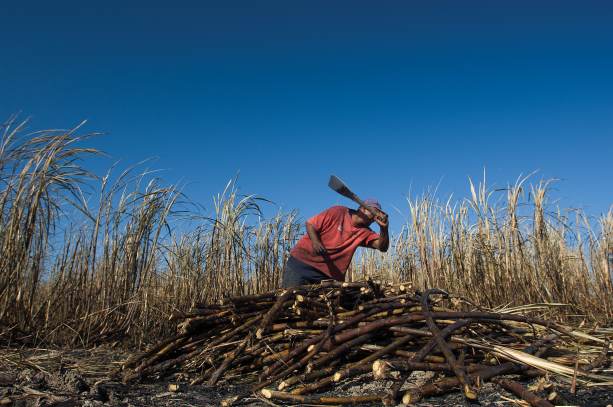EU Sugar Sector Restructuring Seeing Stabilisation of EU Production Import and Export Trends Which Pose Challenges for Some ACP Sugar Exporters
Summary
EU sugar production is stabilising but on a gradual upward trend to 2030, in the context of declining human consumption of sugar in the EU. This will see reduced EU sugar imports and increased EU sugar exports with the EU being a growing net sugar exporter from 2024. EU corporate adjustment to the post quota market realities continues apace, with factor closures in efficient beet sugar production zones as processing operations are consolidated to maximise cost reductions. Maximisation of utilisation of installed capacity efforts place beet co-refiners in a more competitive position than traditional raw cane sugar refiners, with some ACP exporters still needing to rethink their marketing strategies in light of the evolving EU27 market realities. Some ACP sugar exporters however are constrained in their marketing options by existing patterns of corporate ownership. Responding effectively to evolving EU market realities and the UK’s future sugar sector MFN tariff policy will be critical to the commercial viability of existing patterns of ACP sugar exports to the EU27 and UK market respectively.
EU Sugar Production, Consumption, Import and Export Trends
It has been a volatile period for EU sugar production, with production fluctuating considerably; from a low of 14.9 million tonnes in 2015 to a high of 21.3 million tonnes in 2017 to a more moderate 17.6 million tonnes in 2018. EU sugar production is projected to have stabilised in 2019 at 17.5 million tonnes having come through several seasons of adverse weather conditions.
However, in the coming years yields are projected to improve ‘from 74 t/ha in 2017-2019 to 78 t/ha by 2030’, with improving sugar prices and a stabilisation of the area under sugar beet seeing EU sugar production projected to reach 18.5 million tonnes in 2030. This compares to 17.6 million tonnes in 2018 after a height of 21.3 million tonnes in 2017 and EU production quotas of a mere 13.5 million tonnes in the pre-sugar sector reform period (1).

Photo courtesy https://atlantablackstar.com/
In contrast to this growing level of EU sugar production, human consumption of sugar in the EU is projected to decline some 0.8% per annum up to 2030. By 2030 human consumption is projected to be 14.5 million tonnes while total sugar consumption is put at 17.6 million tonnes. This compares to average human consumption levels between 2007 and 2016 of 16.07 million tonnes and average total annual EU sugar consumption of 18.68 million tonnes. This represents a decline in annual EU human sugar consumption over the 2019-2030 period compared to the 2007-2016 period of 9.8% and a decline in total EU sugar consumption of 5.8%.
EU Sugar Production and Consumption 2019-2030 (million tonnes)
| 2019 | 2020 | 2021 | 2022 | 2023 | 2024 | 2025 | 2026 | 2027 | 2028 | 2029 | 2030 | %+ | |
| Production | 17.5 | 17.8 | 17.8 | 17.9 | 18.0 | 18.2 | 18.2 | 18.4 | 18.5 | 18.5 | 18.5 | 18.5 | +5.7% |
| Consumption | 18.6 | 18.2 | 18.1 | 18.1 | 18.0 | 18.0 | 17.9 | 17.9 | 17.8 | 17.7 | 17.7 | 17.6 | -5.4% |
| Net position | -1.1 | -0.4 | -0.3 | 0.2 | 0 | +0.2 | +0.3 | +0.5 | +0.4 | +0.8 | +0.8 | +0.9 |
Source: EC, Agricultural Outlook for Markets and Income 2019-2030’, 19 December 2019, table ‘EU sugar market balance (million t white sugar equivalent)’
According to the EC’s analysis ‘while low sugar availability in the EU over the short term is leading to significant imports, over the outlook period increasing EU production and declining EU consumption are projected to result in a progressive decline in imports to 1.3 million t by 2030 (1). This compares to EU sugar imports of 1.8 million in 2018 and average annual EU imports of sugar of around 3 million tonnes in the pre-reform period from 2012 to 2016 (2).
This needs to be seen in the context of a narrowing of the gap between EU and world market sugar prices which is approaching a mere €40 per tonne. This makes the EU market far less attractive destination of third county sugar which attracts a duty of €94/tonne, with this leading to an under-utilisation of EU MFN sugar quotas.
Global sugar production meanwhile continues to grow in response to growing global demand for sugar, with the share of EU sugar in global production set to fall slightly from 10% to 9%.
In the coming period a growing EU sugar surplus will lead to an increase in EU sugar exports, reaching 2.2 million tonnes by 2030. In 2017 ACP markets took 468,754 tonnes of 22.3% of EU sugar exports and some 648,434 tonnes in 2018 some 20% of a greatly expanded volume of EU sugar exports (3,241,569 tonnes compared to 2,178,885 tonnes) (3).
From 2024 the EU is projected to be a net exporter of sugar as EU import contract and EU exports expand. Between 2023 and 2030 EU sugar imports are projected to contract by 23.5% (-400,000 tonnes) while EU sugar exports are projected to increase by 46.7% (+700,000 tonnes). By 2030 according to the EC’s written analysis the EU is expected to be a net exporter of sugar of around 800,000 tonnes per annum (1), although the statistical tables suggest this is projected to be nearer 900,000 tonnes per annum) (2).
EU Imports, Exports and Trade Balance in Sugar 2019-2030 (million tonnes)
| 2019 | 2020 | 2021 | 2022 | 2023 | 2024 | 2025 | 2026 | 2027 | 2028 | 2029 | 2030 | |
| Imports | 1.9 | 1.8 | 1.9 | 1.9 | 1.7 | 1.5 | 1.3 | 1.3 | 1.3 | 1.3 | 1.3 | 1.3 |
| Exports | 1.3 | 1.3 | 1.5 | 1.5 | 1.5 | 1.7 | 1.8 | 2.0 | 2.1 | 2.2 | 2.2 | 2.2 |
| Net balance | -0.6 | -0.6 | -0.4 | -0.4 | -0.2 | +0.2 | +0.5 | +0.7 | +0.8 | +0.9 | +0.9 | +0.9 |
Source: EC, Agricultural Outlook for Markets and Income 2019-2030’, 19 December 2019, table ‘EU sugar market balance (million t white sugar equivalent)’
This compares to the EU being a net importer of sugar of around 1,580,000 tonnes per annum in the 10 years of the pre-reform period from 2007 to 2016 (ranging from a minimum deficit of 100,000 tonnes in 2009 to a trade deficit of 2.4 million tonnes in 2012 (2).
EU Imports, Exports and Trade Balance in Sugar 2007-2016 (million tonnes)
| 2007 | 2008 | 2009 | 2010 | 2011 | 2012 | 2013 | 2014 | 2015 | 2016 | |
| Imports | 2.6 | 3.0 | 2.3 | 3.5 | 3.4 | 3.7 | 3.2 | 2.8 | 2.9 | 2.5 |
| Exports | 1.4 | 1.0 | 2.2 | 0.7 | 2.1 | 1.3 | 1.4 | 1.4 | 1.4 | 1.3 |
| Net balance | -1.2 | -2.0 | -0.1 | -2.5 | -1.3 | -2.4 | -1.8 | -1.4 | -1.5 | -1.2 |
Source: EC, Agricultural Outlook for Markets and Income 2019-2030’, 19 December 2019, table ‘EU sugar market balance (million t white sugar equivalent)’
Structural Adjustment in the EU Sugar Sector
Structurally after a period of adjustment following sugar production quota abolition, the EU sugar sector is undergoing a consolidation phase. This will lead to a ‘concentration of sugar and isoglucose production in the most competitive EU Member States’. It was the intense competition for market share between EU sugar companies which saw the dramatic fall in domestic EU sugar prices during the transition period (immediately before and after the abolition of EU sugar production quotas). This was exacerbated by declining global sugar prices, in part linked to the increase in volume of EU sugar exports which increased from 1.3 million tonnes in 2016 to 3.4 million tonnes in 2017 (2).
However, the EU market is now stabilising as factories are closed down in response to sector wide adjustments to the post quota market realities. (1) The EU’s leading sugar producing company Südzucker AG and Cristal Union which had been aiming to become the third largest EU sugar producer (after second placed Nordzucker) have both announced factory closures for 2020. According to the EC ‘by 2020, four factories will shut down in France and two in Germany, with a combined total processing capacity of about 800 000 tonnes of sugar’, being removed from the EU sugar supply equation. This comes on top of the factory closure in Poland which took place in 2019.
This was seen by the EC as somewhat surprising, given Germany, France and Poland, the EU’s three largest sugar beet producers are all part of the ‘beet belt’ which, alongside Belgium and the Netherlands, is seen as containing the most competitive EU sugar beet producers. It was seen as particularly surprising since France, Germany and Poland had been amongst the EU Member States which had ‘expanded the beet area most significantly following the abolition of the quota system (France: +19%, Germany: +21%, Poland: +22%; average 2017-2019 compared to the average 2014-2016)’ (1).
However, these factory closures are aimed primarily at reducing fixed costs and increasing competitiveness by running their remaining plants at their maximum capacities. Within the ‘beet belt’ factories in the Netherlands and Belgium are already producing at their estimated capacity limit, with full capacity utilisation being expected to continue to 2030.
Meanwhile ‘sugar production in other smaller sugar producing EU Member States is expected to decline’, with the strongest relative decline in ‘Greece (-47%), Italy (-21%) and Romania (-19%)’ which are ‘among the EU sugar producers with the highest production costs’. Article brought to you by epamonitoring.net


